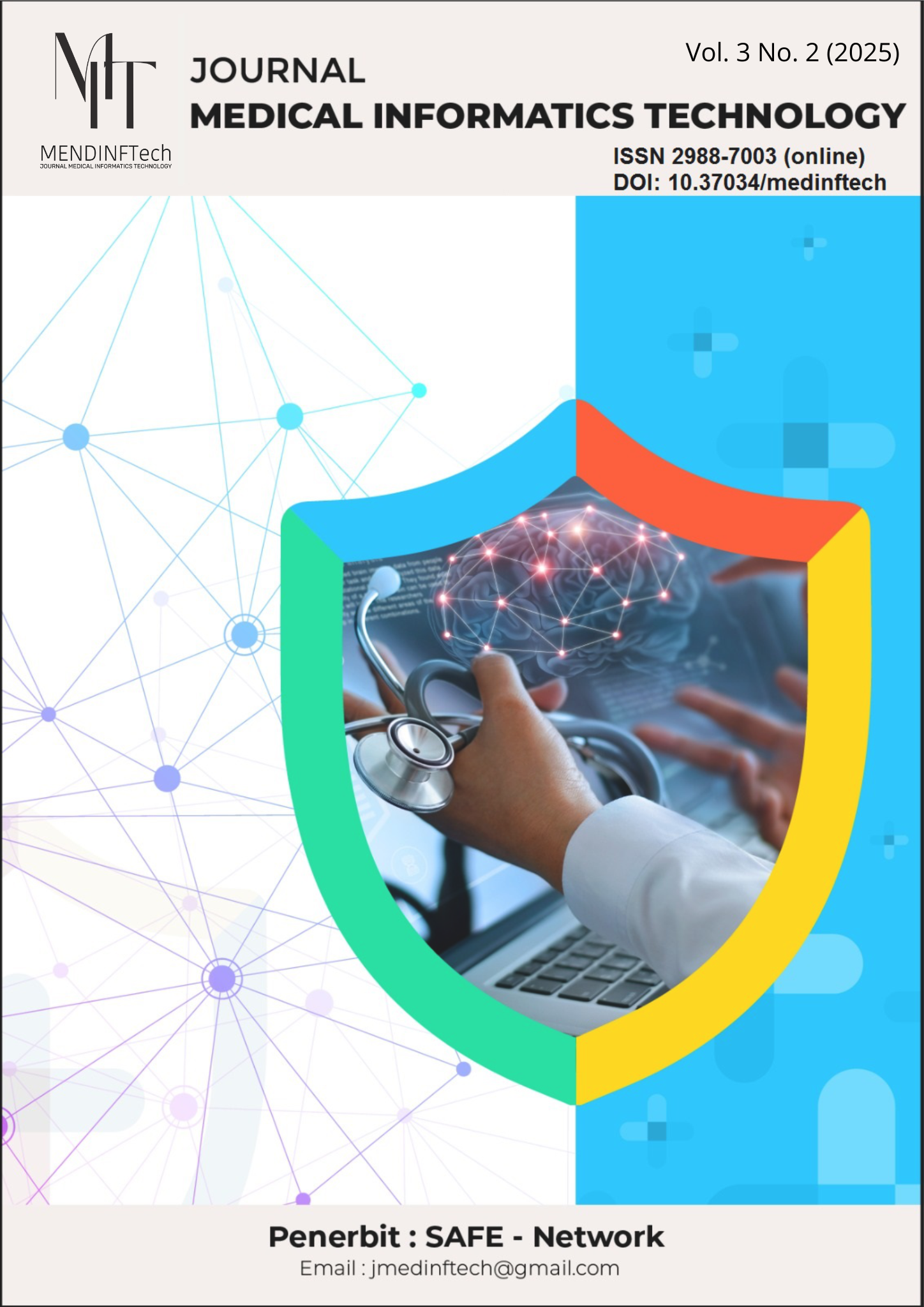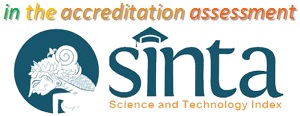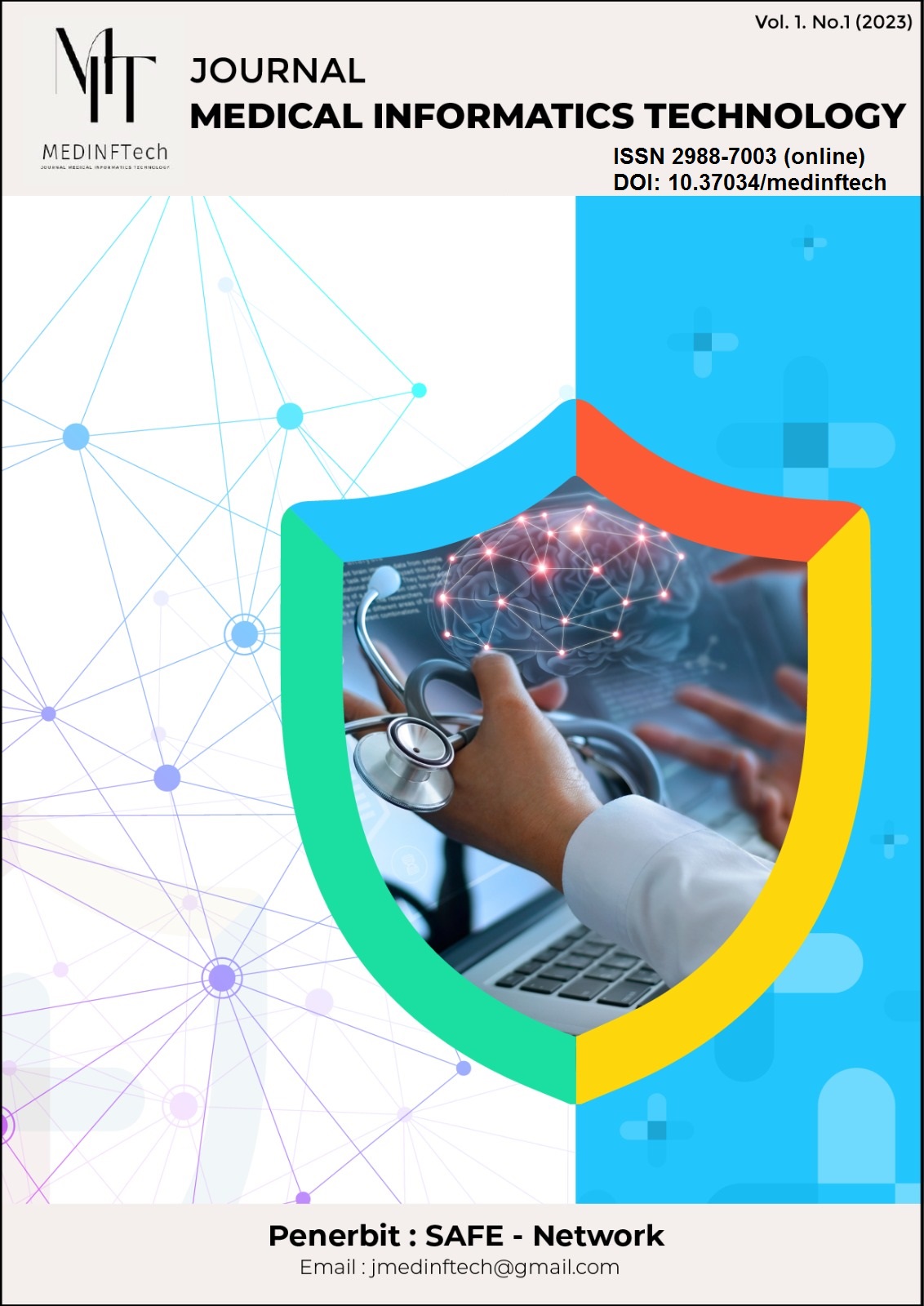Determinants of User Acceptance of the Halodoc Application: An Analysis of User Experience and User Satisfaction
DOI:
https://doi.org/10.37034/medinftech.v3i2.41Keywords:
Determinants Of User Acceptance , Halodoc Mobile Health Application, Regression And Correlation Analysis, User Experience, User SatisfactionAbstract
Halodoc is one of the leading mobile health (mHealth) applications in Indonesia, offering services such as online doctor consultations, medicine delivery, and health information. This study examines the factors influencing user acceptance of the Halodoc app, focusing on the roles of user experience and satisfaction. The research involved a survey of 81 Halodoc users, followed by validity and reliability testing of the research instruments. Results showed that most items had high validity, with correlation values ranging from 0.775 to 0.851 for user acceptance, and above 0.75 for user experience (except one item). Reliability was also high, with Cronbach’s Alpha values exceeding 0.8 across categories. The highest average score was found in user satisfaction (21.77), indicating consistently high levels of satisfaction. Significant correlations were observed among user acceptance, user experience, service quality, and user satisfaction—most notably between user acceptance and satisfaction (0.8314). Regression analysis identified user experience and satisfaction as significant predictors of user acceptance, accounting for 74.4% of the variance. In contrast, service quality did not show a significant effect. The final regression model after stepwise elimination confirmed the strong influence of user experience (coefficient = 0.3513) and satisfaction (coefficient = 0.4399). These findings highlight the importance of enhancing user experience and satisfaction to increase user acceptance of mHealth applications like Halodoc.
Downloads
References
C. Wang and H. Qi, “Influencing Factors of Acceptance and Use Behavior of Mobile Health Application Users: Systematic Review,” Healthcare, vol. 9, no. 3, p. 357, Mar. 2021, doi: 10.3390/healthcare9030357.
X. Zhang, X. Han, Y. Dang, F. Meng, X. Guo, and J. Lin, “User acceptance of mobile health services from users’ perspectives: The role of self-efficacy and response-efficacy in technology acceptance,” Inform. Health Soc. Care, vol. 42, no. 2, pp. 194–206, Apr. 2017, doi: 10.1080/17538157.2016.1200053.
T. Shemesh and S. Barnoy, “Assessment of the Intention to Use Mobile Health Applications Using a Technology Acceptance Model in an Israeli Adult Population,” Telemed. E-Health, vol. 26, no. 9, pp. 1141–1149, Sep. 2020, doi: 10.1089/tmj.2019.0144.
The Univerisity of Sheffield International Faculty- CITY College, R. Dimitrova, P. H. Ketikidis, and City College, International Faculty of the University of Sheffield, “Customers’ Technology Acceptance of Mobile Applications for Personalized Healthcare,” in Proceedings of the 18th international symposium on health information management research, Linnaeus University Press, May 2022. doi: 10.15626/ishimr.2020.02.
S. Fan, R. C. Jain, and M. S. Kankanhalli, “A Comprehensive Picture of Factors Affecting User Willingness to Use Mobile Health Applications,” ACM Trans. Comput. Healthc., vol. 5, no. 1, pp. 1–31, Jan. 2024, doi: 10.1145/3626962.
Z. Deng, “Understanding public users’ adoption of mobile health service,” Int. J. Mob. Commun., vol. 11, no. 4, p. 351, 2013, doi: 10.1504/IJMC.2013.055748.
M. Sediono and S. Kusumadewi, “Analisis User Acceptance Pada Aplikasi Layanan Kesehatan Online di Jawa Tengah dan Daerah Istimewa Yogyakarta,” JATISI J. Tek. Inform. Dan Sist. Inf., vol. 9, no. 1, pp. 203–218, Mar. 2022, doi: 10.35957/jatisi.v9i1.1463.
S. A. Iverson, K. B. Howard, and B. K. Penney, “Impact of internet use on health-related behaviors and the patient-physician relationship: a survey-based study and review,” J. Am. Osteopath. Assoc., vol. 108, no. 12, pp. 699–711, Dec. 2008.
C. F. Van Uden-Kraan, C. H. C. Drossaert, E. Taal, B. R. Shaw, E. R. Seydel, and M. A. F. J. Van De Laar, “Empowering Processes and Outcomes of Participation in Online Support Groups for Patients With Breast Cancer, Arthritis, or Fibromyalgia,” Qual. Health Res., vol. 18, no. 3, pp. 405–417, Mar. 2008, doi: 10.1177/1049732307313429.
Y. Gabriel, “The Voice of Experience and the Voice of the Expert ‐ Can they Speak to each Other?,” in Narrative Research in Health and Illness, 1st ed., B. Hurwitz, T. Greenhalgh, and V. Skultans, Eds., Wiley, 2004, pp. 168–186. doi: 10.1002/9780470755167.ch11.
J. D. Piette, J. A. Blaya, I. Lange, and J. B. B. Sanchis, “Experiences in mHealth for chronic disease management in 4 countries,” in Proceedings of the 4th International Symposium on Applied Sciences in Biomedical and Communication Technologies, Barcelona Spain: ACM, Oct. 2011, pp. 1–5. doi: 10.1145/2093698.2093868.
D. H. Daudelin, M. Kwong, J. R. Beshansky, and H. P. Selker, “Using Specialized Information Technology to Reduce Errors in Emergency Cardiac Care,” in Advances in Patient Safety: From Research to Implementation (Volume 3: Implementation Issues), K. Henriksen, J. B. Battles, E. S. Marks, and D. I. Lewin, Eds., in Advances in Patient Safety. , Rockville (MD): Agency for Healthcare Research and Quality (US), 2005. Accessed: Jul. 02, 2024. [Online]. Available: http://www.ncbi.nlm.nih.gov/books/NBK20561/
P. A. Ubel, C. Jepson, and J. Baron, “The Inclusion of Patient Testimonials in Decision Aids: Effects on Treatment Choices,” Med. Decis. Making, vol. 21, no. 1, pp. 60–68, Feb. 2001, doi: 10.1177/0272989X0102100108.
A. Winterbottom, H. L. Bekker, M. Conner, and A. Mooney, “Does narrative information bias individual’s decision making? A systematic review,” Soc. Sci. Med., vol. 67, no. 12, pp. 2079–2088, Dec. 2008, doi: 10.1016/j.socscimed.2008.09.037.
H. Sheng, F. F.-H. Nah, and K. Siau, “Strategic implications of mobile technology: A case study using Value-Focused Thinking,” J. Strateg. Inf. Syst., vol. 14, no. 3, pp. 269–290, Sep. 2005, doi: 10.1016/j.jsis.2005.07.004.
M. Berg, “Implementing information systems in health care organizations: myths and challenges,” Int. J. Med. Inf., vol. 64, no. 2–3, pp. 143–156, Dec. 2001, doi: 10.1016/S1386-5056(01)00200-3.
E. Sezgin, S. Özkan-Yildirim, and S. Yildirim, “Investigation of physicians’ awareness and use of mHealth apps: A mixed method study,” Health Policy Technol., vol. 6, no. 3, pp. 251–267, Sep. 2017, doi: 10.1016/j.hlpt.2017.07.007.
R. R. Pai and S. Alathur, “Assessing mobile health applications with twitter analytics,” Int. J. Med. Inf., vol. 113, pp. 72–84, May 2018, doi: 10.1016/j.ijmedinf.2018.02.016.
A. M. Adam, “Sample Size Determination in Survey Research,” J. Sci. Res. Rep., pp. 90–97, Jun. 2020, doi: 10.9734/jsrr/2020/v26i530263.
N. Torwane, V. Singh, and A. Dayma, “Sample size determination simplified: A review,” Int. J. Oral Care Res., vol. 9, no. 3, p. 90, 2021, doi: 10.4103/INJO.INJO_19_21.
M. A. Memon, H. Ting, J.-H. Cheah, R. Thurasamy, F. Chuah, and T. H. Cham, “Sample Size for Survey Research: Review and Recommendations,” J. Appl. Struct. Equ. Model., vol. 4, no. 2, pp. i–xx, Jun. 2020, doi: 10.47263/JASEM.4(2)01.
M. L. East, B. Havard, and N. B. Hastings, “Mental Health Mobile Apps’ Instruction: Technology Adoption Theories Applied in a Mixed Methods Study of Counseling Faculty,” J. Technol. Hum. Serv., vol. 34, no. 4, pp. 301–325, Oct. 2016, doi: 10.1080/15228835.2016.1233842.
Z. Namesztovszki, L. Major, C. Kovacs, D. Karuovic, and G. Molnar, “Research of the usage of health-behavior improving mobile applications,” in 2019 10th IEEE International Conference on Cognitive Infocommunications (CogInfoCom), Naples, Italy: IEEE, Oct. 2019, pp. 619–624. doi: 10.1109/CogInfoCom47531.2019.9089953.
G. M. Coorey, L. Neubeck, J. Mulley, and J. Redfern, “Effectiveness, acceptability and usefulness of mobile applications for cardiovascular disease self-management: Systematic review with meta-synthesis of quantitative and qualitative data,” Eur. J. Prev. Cardiol., vol. 25, no. 5, pp. 505–521, Mar. 2018, doi: 10.1177/2047487317750913.
A. Navarro et al., “Developing mobile health applications for neglected tropical disease research,” PLoS Negl. Trop. Dis., vol. 12, no. 11, p. e0006791, Nov. 2018, doi: 10.1371/journal.pntd.0006791.
R. Debon, J. D. Coleone, E. A. Bellei, and A. C. B. De Marchi, “Mobile health applications for chronic diseases: A systematic review of features for lifestyle improvement,” Diabetes Metab. Syndr. Clin. Res. Rev., vol. 13, no. 4, pp. 2507–2512, Jul. 2019, doi: 10.1016/j.dsx.2019.07.016.
S. J. Miah, J. Gammack, and N. Hasan, “Extending the framework for mobile health information systems Research: A content analysis,” Inf. Syst., vol. 69, pp. 1–24, Sep. 2017, doi: 10.1016/j.is.2017.04.001.
J. Hill, K. Ogle, M. Gottlieb, S. A. Santen, and A. R. Artino, “Educator’s blueprint: A how‐to guide for collecting validity evidence in survey‐ based research,” AEM Educ. Train., vol. 6, no. 6, p. e10835, Dec. 2022, doi: 10.1002/aet2.10835.
I. Ahmed and S. Ishtiaq, “Reliability and validity: Importance in Medical Research.,” JPMA J. Pak. Med. Assoc., 2021, Accessed: Sep. 02, 2024. [Online]. Available: https://www.semanticscholar.org/paper/Reliability-and-validity%3A-Importance-in-Medical-Ahmed-Ishtiaq/5c0d8438b3177cfdc1e38dbee30993533c7b73df
E. Knekta, C. Runyon, and S. Eddy, “One Size Doesn’t Fit All: Using Factor Analysis to Gather Validity Evidence When Using Surveys in Your Research,” CBE—Life Sci. Educ., vol. 18, no. 1, p. rm1, Mar. 2019, doi: 10.1187/cbe.18-04-0064.
R. R. Pai and S. Alathur, “Bibliometric Analysis and Methodological Review of Mobile Health Services and Applications in India,” Int. J. Med. Inf., vol. 145, p. 104330, Jan. 2021, doi: 10.1016/j.ijmedinf.2020.104330.
W. Peng, S. Kanthawala, S. Yuan, and S. A. Hussain, “A qualitative study of user perceptions of mobile health apps,” BMC Public Health, vol. 1 6, no. 1, p. 1158, Dec. 2016, doi: 10.1186/s12889-016-3808-0.









